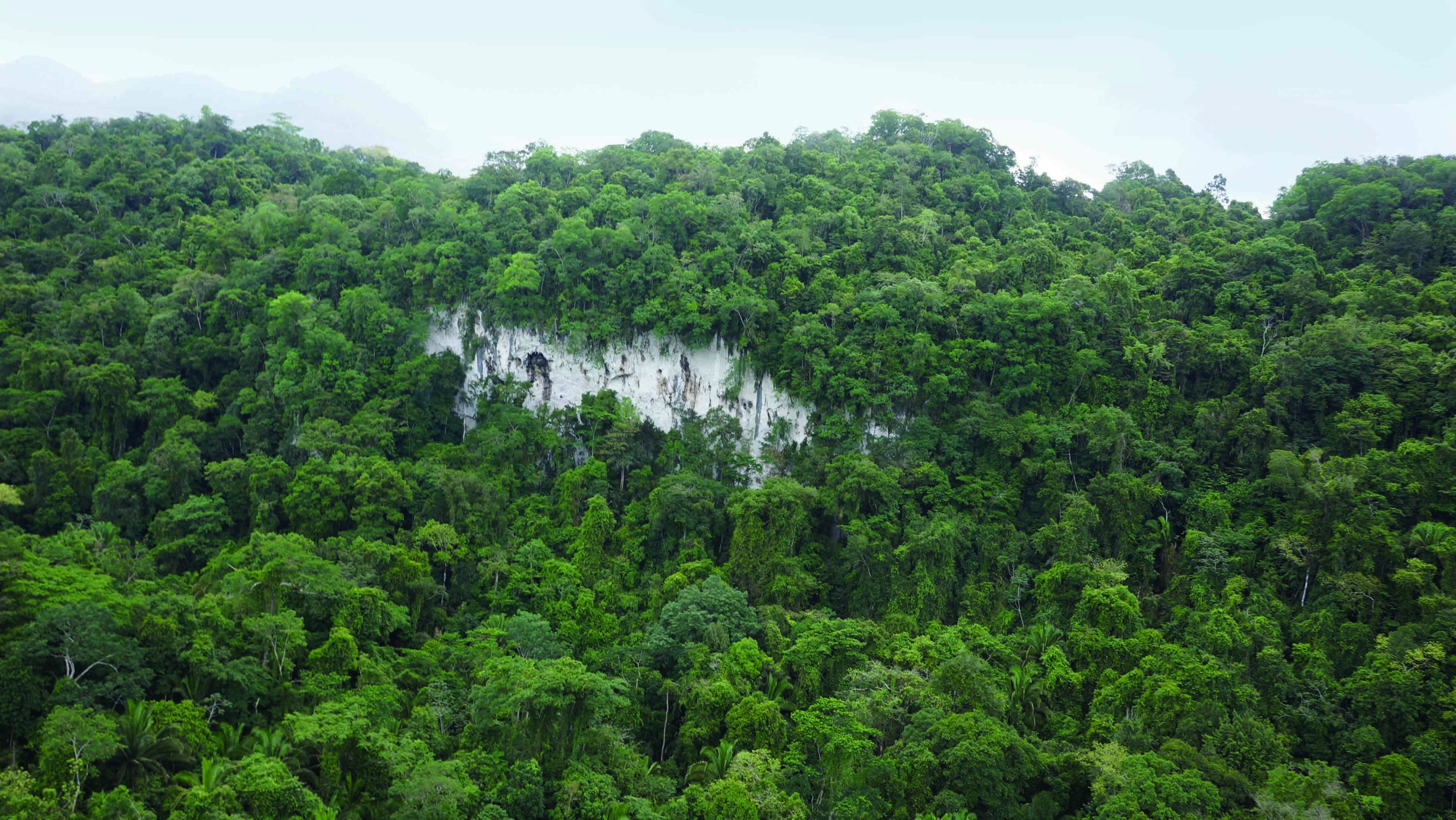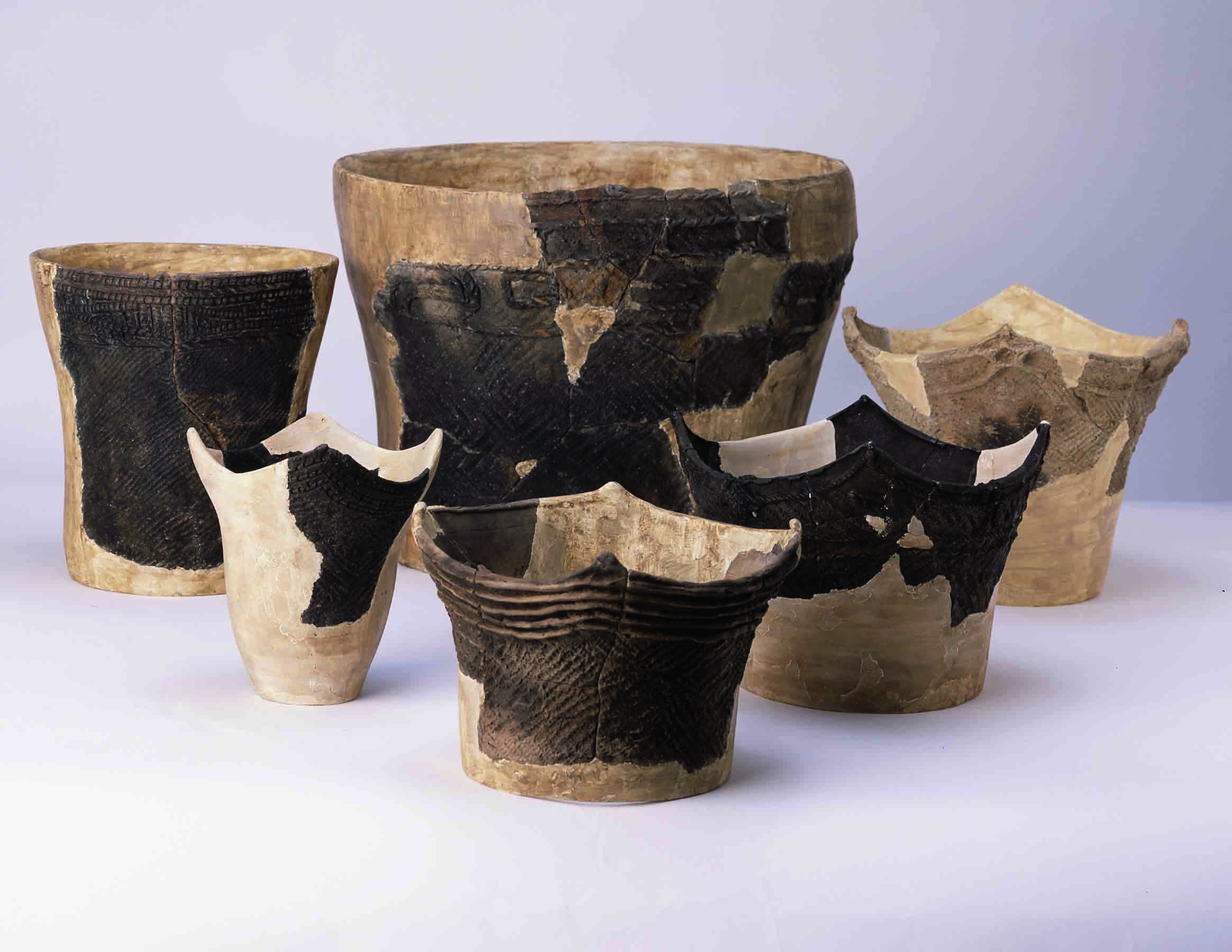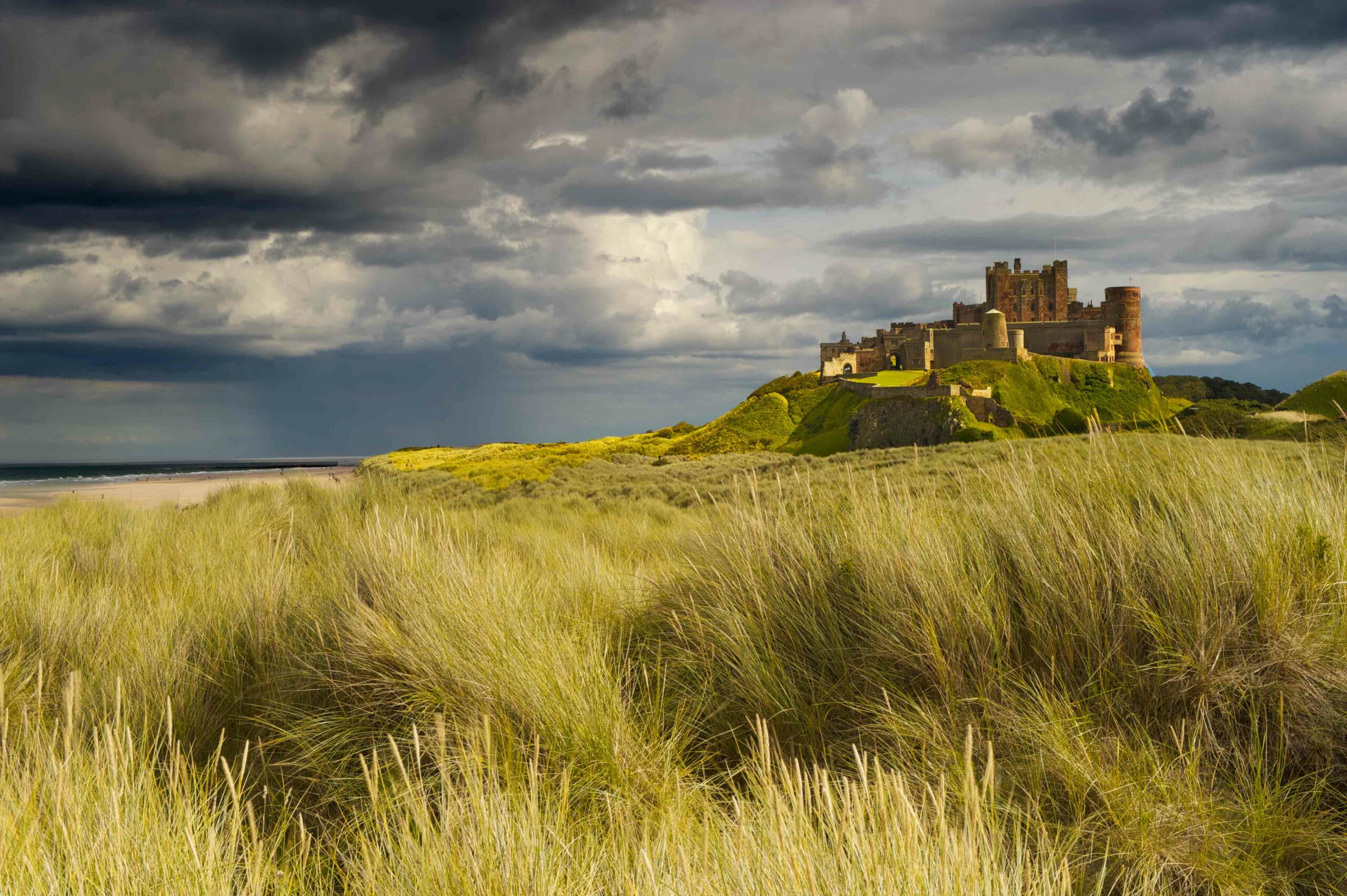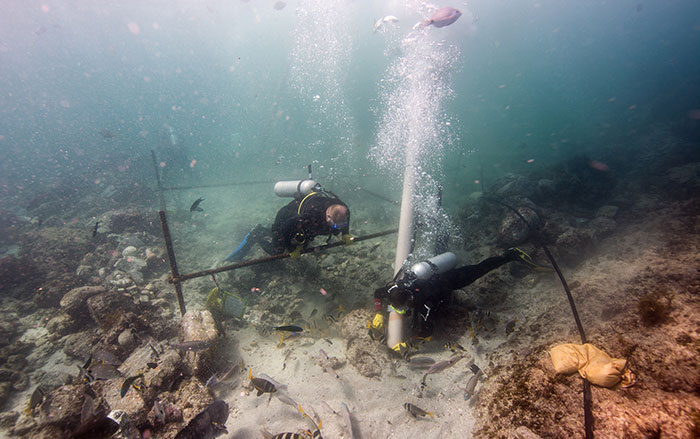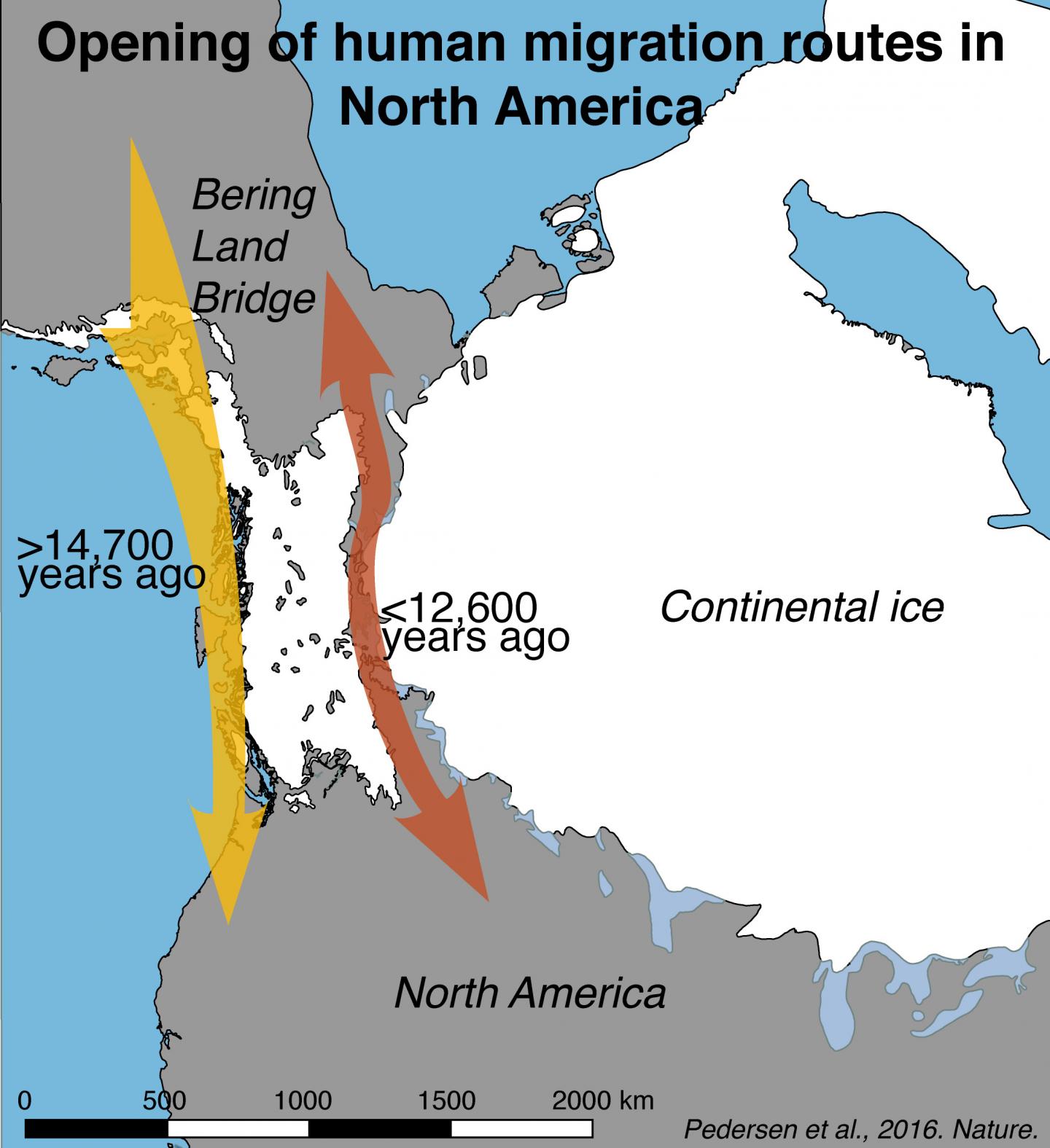
COPENHAGEN, DENMARK—Traveling south from Alaska to the region now known as the continental United States via an inland route would have been impossible for the earliest Ice-Age migrants, according to a report by the Associated Press on recent research led by Eske Willerslev of Cambridge University and the University of Copenhagen. Willerslev and his team tested cores taken from nine former lake beds in northeastern British Columbia for the presence of pollen, fossils, and animal DNA. They found that when a passable corridor through Canada’s ice sheets opened up some 13,000 years ago, it would have been unable to support human life. “The land was completely naked and barren,” said Mikkel Pedersen of the University of Copenhagen. The analysis of the core samples also suggests that bison, hare, and sagebrush began to appear in the corridor around 12,600 years ago, when archaeological evidence indicates people were already inhabiting the Americas. The first migrants likely traveled along the Pacific coast, Willerslev explained. To read in-depth about evidence of early settlement of the Americas, go to "America, in the Beginning."



